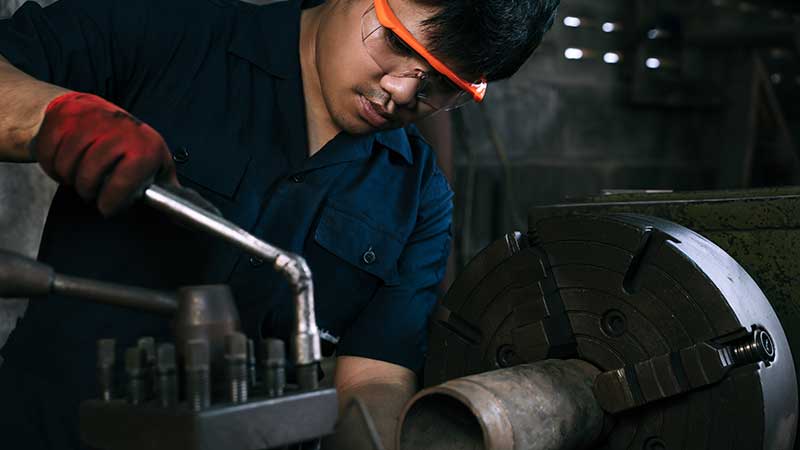
Everyone supports apprenticeships. Whenever the economy suffers, interest in them spikes, and both the outgoing and incoming administrations have called for a big expansion. In a recent survey, 92 percent of Americans had a favorable view of apprenticeships—an approval rating that’s almost unheard of.
So, if apprenticeships are such a good idea, why aren’t there more of them? It comes down to money and a belief that apprenticeships are only for certain kinds of work.
In the United States, around 500,000 people participate in apprenticeships of some type to learn a skilled trade. They are particularly prevalent in the building trades—carpenters, electricians, plumbers, and sheet-metal workers—but they also exist in manufacturing and other industries.
A half-million apprentices may sound like a lot, but it’s only a fraction of the number of you’ll find in other countries. Germany, a country with only a quarter of our population, had 1.34 million people in apprenticeships in 2015. Indeed, more than half of all German workers enter the workforce through an apprenticeship, and in many fields, it is virtually impossible to do so without one.
In the United Kingdom, too, many more people participate in apprenticeships than in the United States (742,000 in 2019 even though the U.K population is only a fifth that of the U.S.). In the U.K., apprenticeships serve all sectors of the economy, from engineering and health care to financial services and social work—even the performing arts.
There are two big reasons why apprenticeships don’t play a major role in the U.S.
First, apprenticeships lack a reliable funding base. Most programs in the U.S. depend on funding from the federal government—an unreliable source even in the best of times. Not only that, they are funded through multiple programs and a complicated system of grants involving states, colleges, industry associations, unions, employers, and others. While it’s fine that so many entities are involved, that complexity makes it difficult to respond quickly to rapidly changing workforce conditions.
Contrast that to England, where employers of a certain size automatically pay an amount equal to half a percent of their total payroll into an apprenticeship fund. The employers can then spend those funds on approved apprenticeships. If they don’t use the funds, they forfeit them. Everyone is on a level playing field, and everyone participates.
The second reason the U.S. lags in apprenticeships—and a far more troubling one—is that we still are stuck on the notion that people must choose between academic and vocational education. The rest of the world moved on from that hopelessly obsolete notion long ago, and it’s time we did the same.
In the U.K., a growing number of apprenticeships are a type they call “higher” and “degree” apprenticeships. These apprenticeships combine technical and academic learning and lead to a recognized credential that people can build on. Employers and government split the cost of the program, meaning apprentices are paid a wage and can obtain a degree without paying tuition.
A good example of what this looks like in practice is a degree apprenticeship for product design and development engineers for the automobile industry. These engineers work at all stages of creating modern automobiles and their component parts, so they must be able to develop concepts and designs, use computer-aided design (CAD) and rapid prototyping tools, and test and analyze performance. The apprenticeship includes a foundation stage to develop core engineering skills and fundamental scientific and mathematical principles. This is taught side-by-side with hands-on experience at producing drawings and models, operating lathes and milling equipment, and using a wide range of computer software. At the end of the program, the apprentice receives a bachelor’s degree and is usually already in a well-paid job in the industry.
These apprenticeships are designed by industry, and most learning takes place on the job. But the fact that they lead to a degree means they can never be a dead end. Whoever completes this kind of apprenticeship gets a credential that recognizes both the foundational and specialized learning they have gained. This means they can change careers whenever if the need or opportunity arises. Some American apprenticeships are like this, but not nearly enough.
It’s time for a concerted national effort to expand apprenticeships, particularly modern degree apprenticeships that combine the best of technical and academic learning. Apprenticeships should play a much more important role in preparing Americans for the work of the future. Other countries have already shown us the way.
Jamie Merisotis, president and CEO of Lumina Foundation, is the author of “Human Work in the Age of Smart Machines.”
